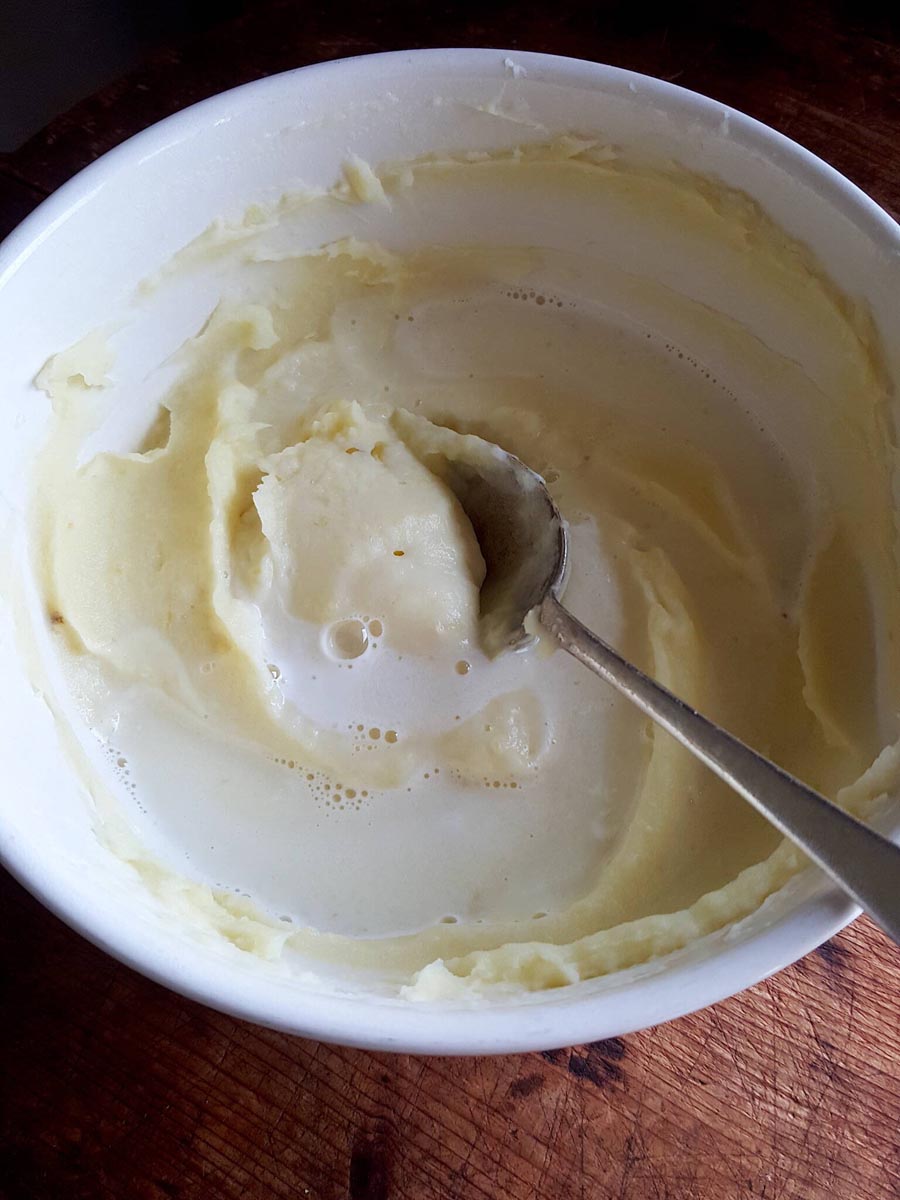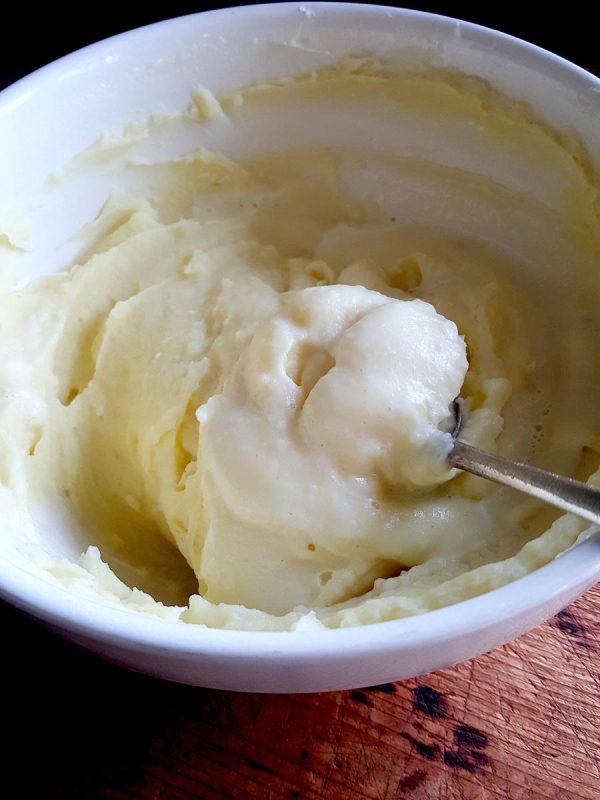Mid-week Potato Mash

Introduction
Serves: 6
Ingredients
Salt
2 Tbsp butter
150ml (about 5 fl oz) whole milk, or enough to make a creamy mash
Method
1 Peel potatoes and cut into cubes. Steam or cook gently in salted water until tender (if steaming the potatoes, sprinkle them with salt). Remove potatoes still in their steamer and set them on a rack so air can circulate underneath, or alternatively, drain potatoes into a large sieve. Cover potatoes with paper towels and leave to dry off for a few minutes.
2 Transfer potatoes to a large, warmed china bowl and mash with a potato masher. Alternatively, see my preferred way of making mash in Recipe Notes below. Add salt to taste – you’ll be surprised how much it takes to bring out the full flavour (as much as 1½ teaspoons of salt!). Beat in butter and enough hot milk to form a creamy purée. Taste for seasoning and serve.
Recipe Notes
I’m a huge fan of making potato mash by passing the potatoes through a mouli (a mouli-légumes to be exact), the sort of vegetable ‘sieve’ or press many of us used back in the day to make vegetable purées for our children. It forms a lump-free aerated purée, and does so quickly, so the potato retains heat. Set the mouli over a heated china bowl and pass the potatoes through a few at a time. As the potatoes are pressed they fall into the heated bowl below in thinnish strands, trapping air between the layers, which keeps the purée light. A china bowl will keep the potatoes hotter for longer than a saucepan will.
Next step is seasoning – you’ll be surprised at the difference salt makes, so don’t skimp. Add some, stir it in, and taste, and continue doing so until the purée has heaps of flavour. If you are unsure of the difference salt makes, set aside a tablespoon of purée before you add any salt, and taste-compare it with the purée as you season it. You will soon see the amazing depth of flavour that develops. Next, whip in butter, then start whipping in hot milk. Cold milk will make a potato mash gluggy. Hot milk helps keep it warm, and, importantly, helps retain air in the mash, keeping it light. When it is done, run a trickle of hot milk over the top and cover the bowl with a china dinner plate. The mash will stay piping hot for 10-12 minutes while you finish off other dishes. Whip in the top milk before serving.
How soft you make a mash is entirely up to you, and how rich you make it is also an individual thing. The trend in restaurants these days is to make a very soft, flowing mash with as much butter and cream as the mash will hold. Delicious, of course, but it’ll be laden with calories. I’ve called this mash Mid-week Potato Mash because it is something you can eat as part of a regular diet! As for cream in place of milk? Sure, why not … it will make a richer, creamier mash, but use it hot. And everyone knows not to purée potatoes in a food processor because they will go gluggy. However, parsnip, kumara (sweet potato), carrot and celeriac can all be whipped to gloriousness with butter and seasonings in a food processor, and in the case of parsnips with added cream.
Potato & Celeriac Mash with Crispy Bacon
Ever wondered how to make a fluffy, light potato purée

My Mouli
It may have lost the knob on the end of the handle, but it has done serious duty in the Biuso household since I purchased it in Italy in 1976. That’s 45 years! You buy a piece of kit these days and you’ll be lucky to get 5 years of use before it goes to the rubbish heap. Look online or visit garage sales … you may be lucky to find one.
